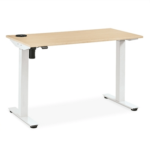Sciatica, or inflammation of the sciatic nerve, affects up to four out of every ten people at some point in their lives. This nerve goes through the pelvis and buttocks and originates on each side of the lower spine. The nerve then travels down the back of each upper leg before splitting into branches that lead to the foot at the knee.
Anything that irritates or presses on this nerve might cause discomfort radiating down the back of one buttock or leg. Pain can have a wide range of sensations. Sciatica can cause a minor soreness, a sharp, burning feeling, or severe pain. Numbness, weakness, and tingling are all symptoms of sciatica.
Prolonged sitting, standing, coughing, sneezing, twisting, lifting, or straining might aggravate pain. Hot and cold packs, medicines, exercises, and complementary and alternative remedies are all used to treat sciatic pain. Generally, Pain o soma is a priority choice to reduce this pain.
Symptoms of sciatica pain
Lower back discomfort that extends down the hip and buttocks and one leg is the most typical sign of sciatica. When you sit, cough, or sneeze, the discomfort usually affects only one leg and gets worse. At times, the limb may feel numb, weak, or tingling. Sciatica symptoms usually begin unexpectedly and continue for days or weeks.
Up to 85% of Americans will have back discomfort at some point in their lives. However, the sciatic nerve is not always involved. Back discomfort is frequently caused by overextending or straining the muscles in the lower back. The way the pain travels down the leg and into the foot is what distinguishes sciatica. It could be described as a severe leg spasm that lasts for days.

How can we treat sciatica pain?
Medications
Pain relievers can help patients with short-term sciatic relief. Acetaminophen and NSAIDs are options for calming your sciatic pain. Your doctor may prescribe Soma 350 mg or pain o soma 350 mg to treat your pain.
Asteroid injection may be given to you by your doctor to reduce inflammation.
Exercise
Exercise always helps good to reduce physical pain. Here we discuss some exercises that can help you to reduce pain.
Knee-to-Chest Exercise
This easy stretch focuses on the lower buttocks and upper thighs.
Step-1: Lie down on your back, bend your legs, and try to flat on the floor.
Step-2: Keep one foot on the floor while bringing one knee to your chest.
Step-3: Hold for up to 30 seconds with your lower back pressed to the floor.
Step-4: Keep doing the same thing on the opposite side.
On each side, aim for 2 to 4 repetitions. Keep one leg straight on the floor while elevating the other to the chest to make the exercise a little more difficult. Bring both knees to your chest as well.
Standing Hamstring Stretch
When performing this workout, maintain caution. Hold on to something if you have to, and don’t stretch too far.
Step-1: Stand tall with one foot on a slightly higher surface, such as a stair step.
Step-2: On the step, straighten your leg and point your toes high.
Step-3: Lean forward slightly while keeping your back straight.
Step-4: Keep your breath for 20 to 30 seconds.
Step-5: Do the same thing with the opposite leg. With each leg, aim for 2 to 3 repetitions.
Pelvic tilt exercise
It is yet another deceptively basic sciatica workout.
Step-1: Lie down on your back, legs bent, and arms by your sides.
Step-2: Tighten your stomach muscles, press your back into the floor, and slightly raise your hips and pelvis.
Step-3: Imagine your belly button touching your backbone as you hold this position.
Step-4: After a few seconds, let go. Then do it again.8–12 reps is a good goal.
Glute bridges
The glutes are a set of muscles that run down the back of the buttocks. They can push on the sciatic nerve if they are too tight.
Step-1: Lie down on your back with your knees bent on the floor. The distance between your feet should be roughly shoulder width. Keep your arms and relax on your sides.
Step-2: Lift your hips by pushing through your heels until your body creates a straight line from your knees to shoulders.
Step-3: Stay in place for a few seconds.
Step-4: Lower your hips to the floor slowly. Then do it again.
This exercise necessitates good form. Make sure your back is not rounded or arched. 2 or 3 sets of 8 to 10 reps is a good goal.
Lying Deep Gluteal Stretch
If you don’t have a lot of flexibility, you may need to adjust the workout significantly.
Step-1: Lie down with your legs bent. Raise your right ankle and place it on the outside of your left knee.
Step-2: Lace your fingers behind your left thigh with both hands and slowly draw it toward you while keeping your head and back on the floor.
Step-3: Keep your breath for 20 to 30 seconds.
Step-4: Make the same with the other leg.
With a book or solid pillow beneath your chin, you may need to lift your head somewhat. If you can’t reach your thigh easily, wrap a towel around it and pull it toward you. With each leg, do 2 to 3 repetitions.
The bottom line
Sciatica pain can be worse with time if you are not taking the necessary steps. Different exercises and few medications can be good options to reduce this pain as soon as possible.






